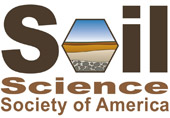Enhancement of Microbial Community Recovery Following a High Intensity Forest Fire.
Enhancement of Microbial Community Recovery Following a High Intensity Forest Fire.
Poster Number 31
See more from this Division: PosterSee more from this Session: Climate Change Adaptation and Mitigation
Friday, March 7, 2014
Grand Sheraton, Magnolia Foyer
High intensity wild-land forest fires have potentially long-term soil ecological impacts, including impacts on soil microbial communities. The frequency of these fire events is postulated to increase in some climate change scenarios. If so this may result in long-term managed pine forests having a lengthened time-to-recovery. This study focused on soil microbial community dynamics following the Arapaho Fire, a 40,000 hectare fire that burned through public and private ponderosa pine (Pinus ponderosa) in Central Wyoming during July, 2012. Several post-fire soil amendments were applied, and microbial populations monitored by phospholipid fatty acid (PLFA) analysis. These amendments included compost, two compost teas, NH4NO3 fertilizer and water all measured against a control. These were applied to small plots where treatments were randomized across seven replicate blocks. Compost and one compost tea improved fungal and protozoa recovery, while generally treatment showed total microbial abundance increased. Strong microsite interactions were detected, indicating significant spatial heterogeneity. Although economic assessments will need to be conducted, likely on a larger scale and over the long term, the use of compost and one of the compost teas might be adaptable amendments to enhance soil microbial populations at high-intensity burn sites.
See more from this Division: PosterSee more from this Session: Climate Change Adaptation and Mitigation
